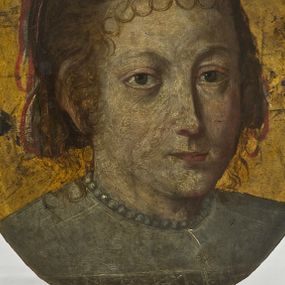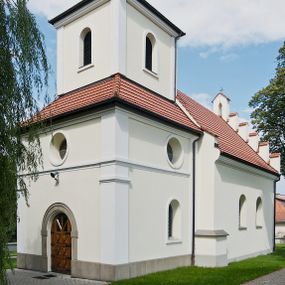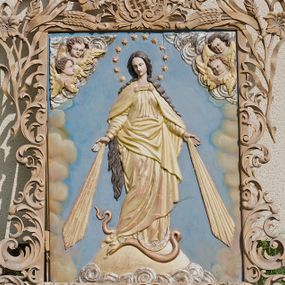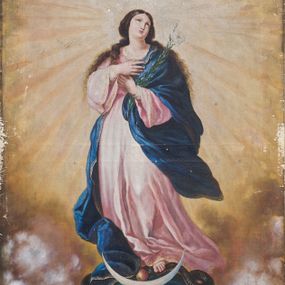
Sanka
Elaboration author
Emilia Karpacz
Monuments
Parishes

A portrait of Zofia Kochańska of the Swierczewski family

Church of St. James the Apostle in Sanka

Our Lady of the Immaculate Conception procession float

Our Lady of the Immaculate Conception
History abstract
Stanislava of Sanka, daughter of Boguta and Rosława, was mentioned on the pages of "The Life of St. Salome" from 1269. The parish of St. James the Greater in Sanka was already included in the Peter's Pence lists for the year 1325, therefore it had to be built before this date. The first owner of the village known by name was Andrew from Morawica, Sanka, Balice and Pisary, a descendant of the Toporczyk family, son of Grzegorz from Morawica, mentioned in the years 1335–1361. The heir of the village was also Grzegorz from Morawica and Sanka, probably the son of Andrew, recorded in the period from 1382 to 1400. Next, the complex of estates that included Morawica, Sanka, Chrosna, Płoki and the villages in Grojec and Regulice was inherited by their descendants. The land in Sanka was subject to inheritance divisions and often had more than one owner. Nevertheless, in the "Liber beneficiorum" Jan Długosz mentioned Stanisław Sośniecki of the Topór coat of arms as the only owner of a village which was supposed to include kmiecy lans, gardens and an inn, as well as parson’s fields and meadows. In 1581, the village was taken over by Marcin Świerczowski of the Topór coat of arms, a committed follower of the teachings of Calvin. The parish church was converted into a Protestant church and robbed of its furnishings. Zygmunt Świerczowski, son and heir of Marcin, remained Catholic. In the years 1618–1626, he renovated and rebuilt the church of St. James, and his son Stefan became a priest and the parson in Sanka. After the death of Zygmunt Świerczowski, the village was inherited by the husband of his daughter Zofia, a land clerk from Cracow, Rafał Kochański. From sources dating back to the first half of the 18th century, it is known about the existence of manorial and parsonic fields in Sanka, as well as kmiecy lans. Before the Second Partition of Poland, the village remained in the hands of two owners – the so-called Wielka [Great] Sanka, i.e. the southern part of the settlement with the church, belonging to the pantler from Mielnica, Kasper Gołuchowski; and Mała [Small] Sanka, covering the northern areas around the manor house, to Ignacy Bobrowski, a cup-bearer from Oświęcim. The division lasted for the next few decades. In 1868, Ewald Miguła became the only lord in the village. His son Gustaw initiated the establishment of a school in Sanka. From 1908 to 1915, the village was owned by the Countess Ewelina Dunin Borkowska (born Mazaraki), and in 1915 the manor house in Sanka was acquired by the legal advisor of the Polish Academy of Arts and Sciences, Józef Skąpski. After the World War II, the manor buildings were nationalised. Today, they remain in a state of ruin.
How to cite?
Emilia Karpacz, "Sanka", [in:] "The Sacred Lesser Poland Heritage", 2026, source: https://sdm.upjp2.edu.pl/en/places/sanka-1